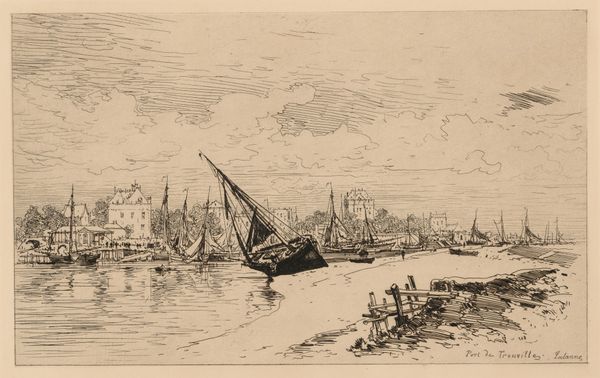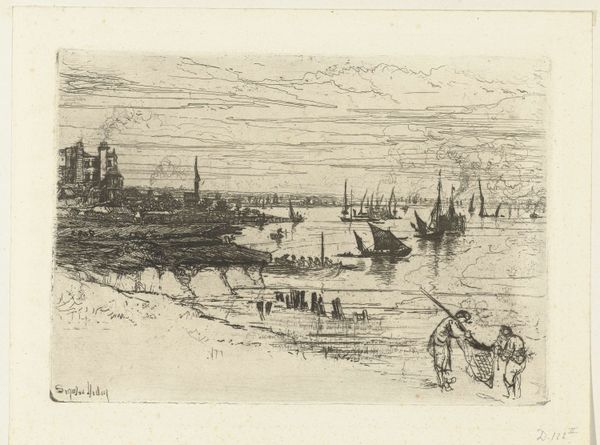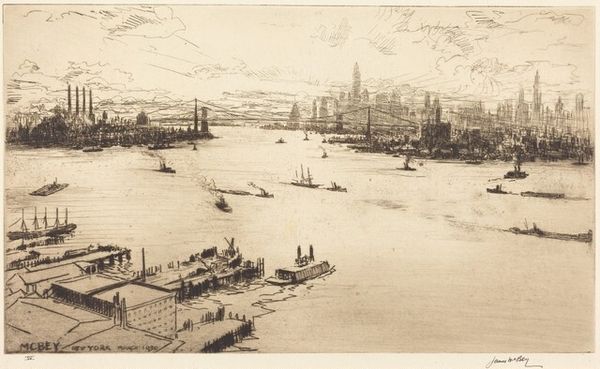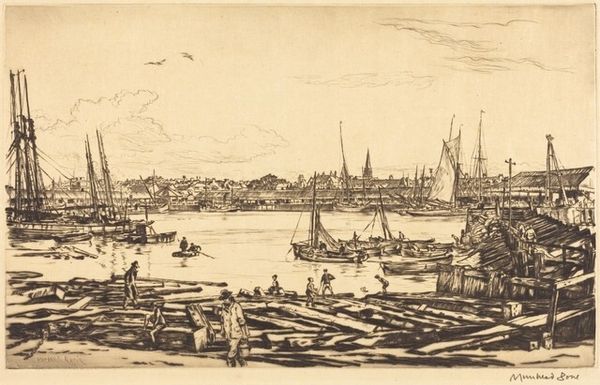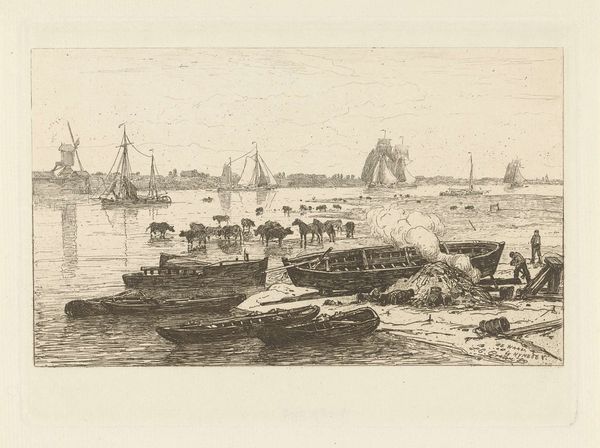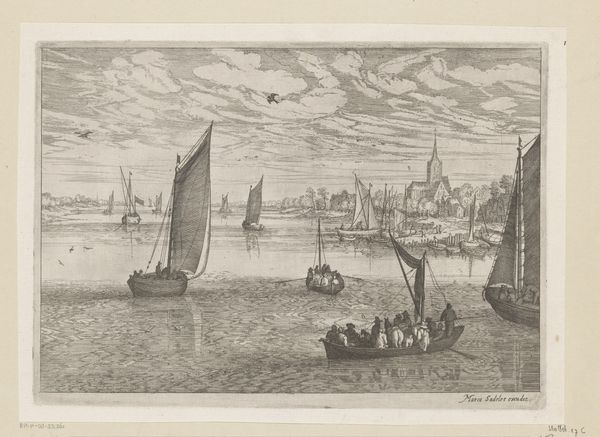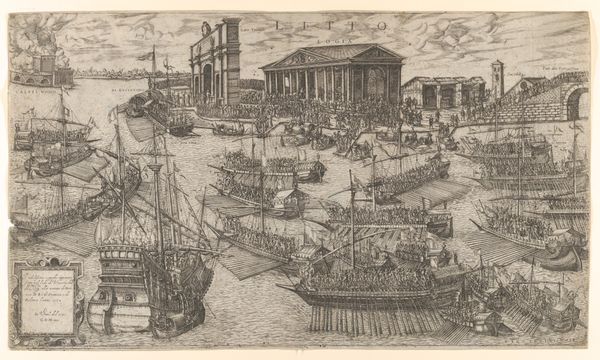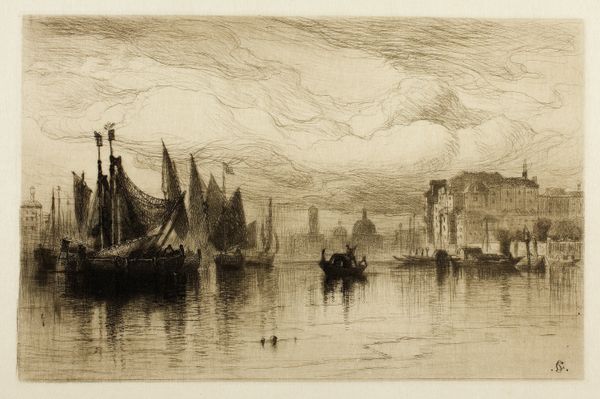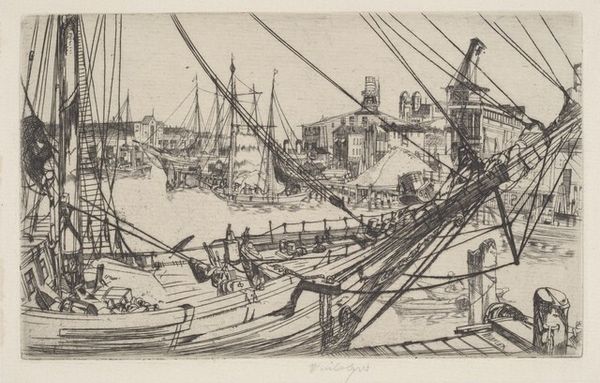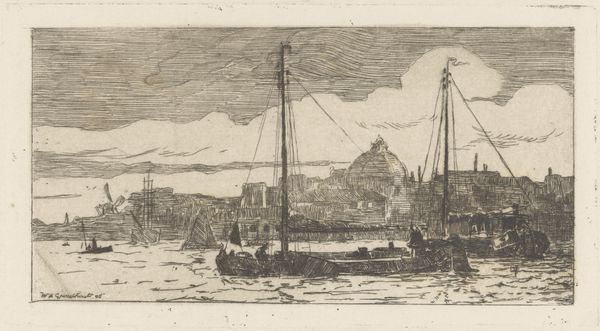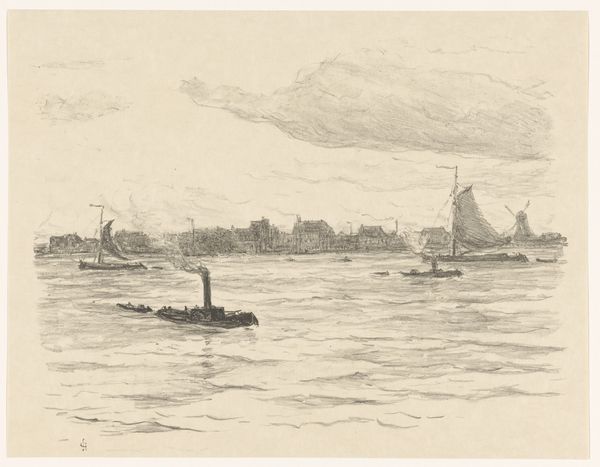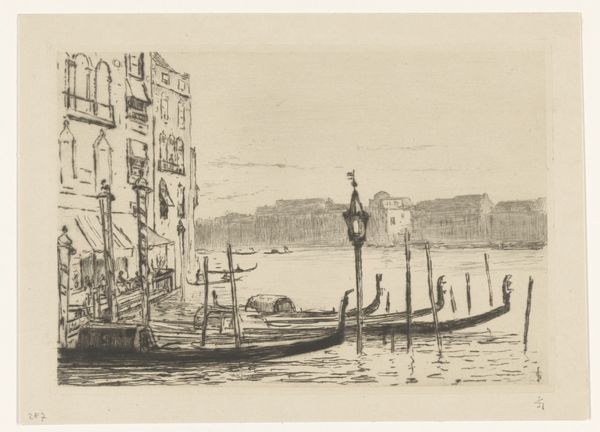
print, etching
# print
#
etching
#
etching
#
geometric
#
cityscape
#
modernism
#
realism
Dimensions: image: 226 x 300 mm sheet: 293 x 402 mm
Copyright: National Gallery of Art: CC0 1.0
Editor: So, this is "Incoming Liner," an etching by Max Mougel, probably made between 1935 and 1943. I'm really drawn to the detail in the ship and the city skyline behind it. How would you interpret this piece? Curator: The key here lies in the printmaking process itself, an etching produced during a time of significant social upheaval. Mougel, through his material choices and labor, is depicting not just a cityscape but the mechanics of urban life. Note how the crisp lines delineate the ship’s structure, almost diagrammatic. Consider how this precise, reproducible medium, printmaking, democratizes art, putting images of industry and labor into wider circulation. What do you make of the clouds? Editor: They're very dramatic, almost overpowering the cityscape. The etching seems so detailed everywhere else; here the shading feels looser, almost gestural. Curator: Precisely. And how does this contrast play into our understanding of labor? Mougel draws our eye to the ship—the vehicle of labor—but the environment, rendered through that looser hand, speaks to uncontrollable forces, be they economic or environmental. Are we meant to feel the city is at the mercy of external forces? Notice, also, the small label "Federal Art Project NYC WPA." This wasn't just a personal artistic endeavor. The state subsidized the art production and the means. Does that fact shift your understanding? Editor: It does. I hadn’t considered that the government involvement affected how art was made or circulated. Thinking about the WPA helps me consider the economic context, as well as who got to see and own art in that period. Curator: Exactly. By acknowledging the labor behind its making and considering its social and economic context, we move beyond simply appreciating the image towards understanding its complex layers of meaning. Editor: I will definitely be looking at art through that lens in the future! Thank you.
Comments
No comments
Be the first to comment and join the conversation on the ultimate creative platform.
